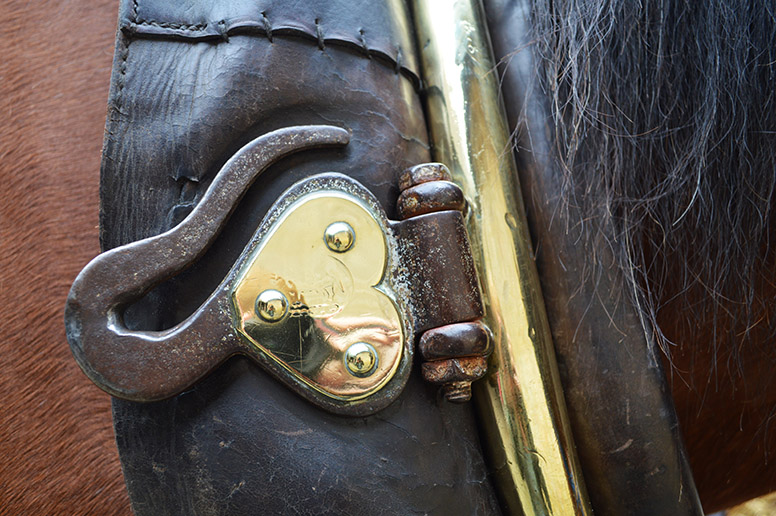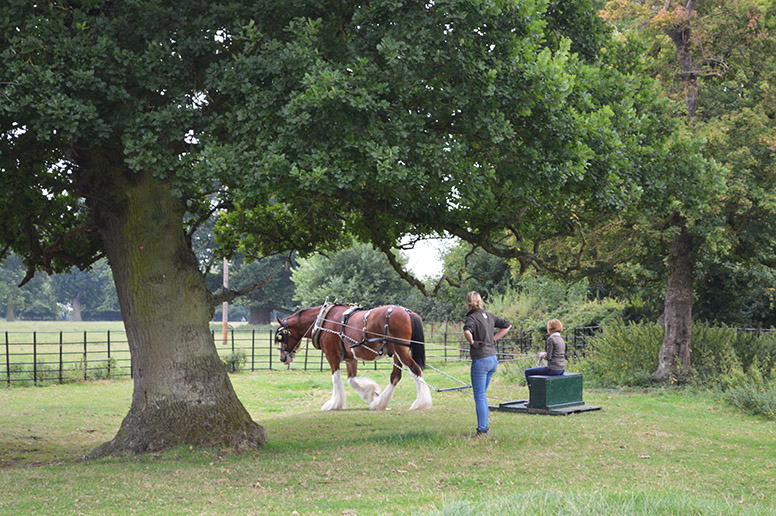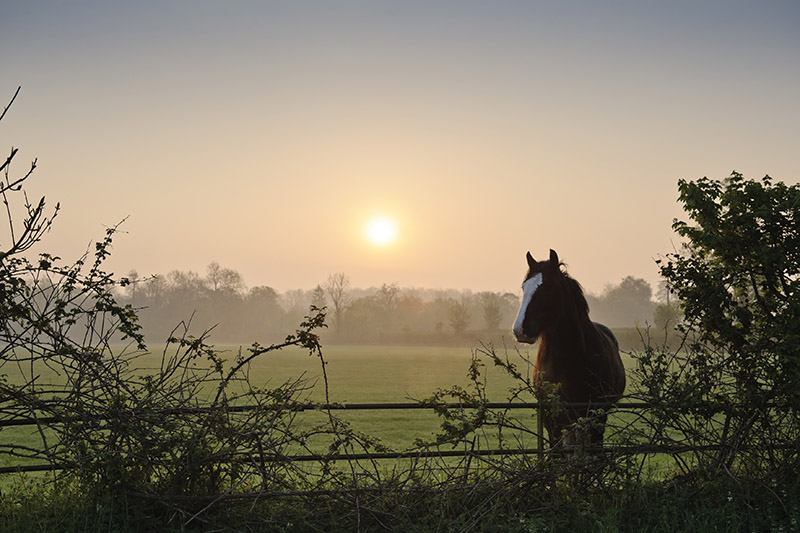I’m facing four large bottoms. There is some stamping and the swish of a tail as head groom Emma Warner introduces us, confident we aren’t in any danger: “They won’t kick; the worst they’ll do if you walk behind them is break wind.”
We’re in the 18th century stables at Wimpole Hall meeting the farm’s magnificent Shire horses before spending a day working with them out in the fields, something that has been done on farms for centuries. I’m paired up with Jasper, a beautiful black gelding who stands at an impressive 17.3 hands. His feathered feet are the size of dinner plates, his body sturdy and muscular, but his long face is gentle; he seems too intent on making short work of his breakfast to bother about me as I begin brushing his smooth, dusty back (standing on tiptoe on a milk crate to reach).
Emma has been in charge of the heavy horses at Wimpole for eight years and leads their Heavy Horse Driving courses, taking place throughout September. It’s a chance to get up close to these gentle one-tonne giants and spend a day as a VIP on the farm. You don’t need horsey experience; just curiosity (and perhaps a secret desire to drive a carriage, Jane Austen style, which you’ll get to do later in the afternoon).
“We offer driving courses to give people the opportunity to learn about and get hands-on with the horses,” says Emma. “Encouraging and increasing interest in the breed helps to protect and preserve it while passing on the knowledge and skills related to the traditional working of these horses.”

There are just three of us on today’s course, and as we groom and get to know our new companions, Emma tells us more: “Shires typically come in block colours – bay, black or grey – and stand at around 18 hands. They’re called Shire horses because they originally came from the Shire counties and were bred to work on the land as they’re so big and strong; though there’s less need for that nowadays.”
Shires were traditionally employed for ploughing and, because they create less damage to the habitat than machinery, for logging and forestry. They were also used in battle because of their strength and stature.
“Our Shires at Wimpole pull the carriages and do a little bit of harrowing and rolling, and we’d like to move on to ploughing and cultivating,” says Emma. After the horses are brushed and fed, we learn how to tack them up in Old English collars and shining bridles, before leading them out into the field. Here, we’re taught how to ‘drive’ our steeds, walking behind them using ropes to steer. They’re wonderfully obliging and respond easily to our voice commands (‘come over’ to go left and ‘weesh’ to go right).
“They love to work,” says Emma. “They are very accepting of new jobs and skills, they like to have a job to do and build strong bonds with the people who handle them. They’re happy being ridden as well as driven, and going from carriage work to agricultural work. They have fantastic characters and are just so impressive in their size, power and beauty.”

Interestingly, though they’re known for their gentle natures, this isn’t a natural characteristic. Shire horses today are docile because only good-natured individuals were chosen in the past for breeding, meaning any aggression was bred out of them, making them easier to handle. As well as driving, we get to jump on a wooden sledge and have the horses pull us along. It’s all good practice for pulling ploughs (not sure I’m happy being compared to a plough…) and working with people.
“When Jasper came to us he was terrified of people,” admits Emma. “He wouldn’t let anyone go near him, but after six months slowly building up that trust he was happy to be ridden and driven.”
Another of the Shires, Lady, was born here on the farm, an event that Emma was there to witness. “Queenie has bred six foals in all, her most recent foal, Lady, was born in June 2013; we still have Lady and plan to train her to work alongside the other Shires at Wimpole when she is old enough. I was there at the birth, it was very calm and quite quick, and Queenie is a fantastic mother to her foals.”
Lastly, after lunch in the tea room (and a nose around the rest of the farm, where Florence the pig is also imminently due to give birth), the Shires are fixed up to the carriage for us to drive to the main house. Seated up high, directing these noble animals up the long, tree-lined drive to Wimpole’s imposing facade, is a magnificent feeling, and we attract admiring glances from visitors.
The whole day has been a unique and enriching experience, perfect for anyone with even a passing interest in animals, history, farming – or all three. Getting more connected to our rural heritage can’t be a bad thing, and I’ll certainly be back to visit my handsome new chum Jasper, who I leave in his stable, happily munching after another day’s work, just as his ancestors have done for hundreds of years.
Heavy Horse Driving for Beginners costs £120, 10am-4pm until 1 October. Bring a packed lunch and dress for the outdoors.
www.nationaltrust.org.uk/wimpole-estate
ALSO AT WIMPOLE:
Shire Horse Carriage Rides until 1 October. £50 per group of four
Wimpole at War 1940s weekend, 19-20 September. Entry £17.50 (adult)
Wimpole Parkrun 9am every Saturday. Free. All year round

